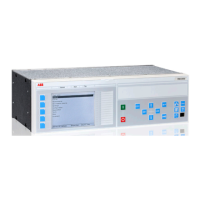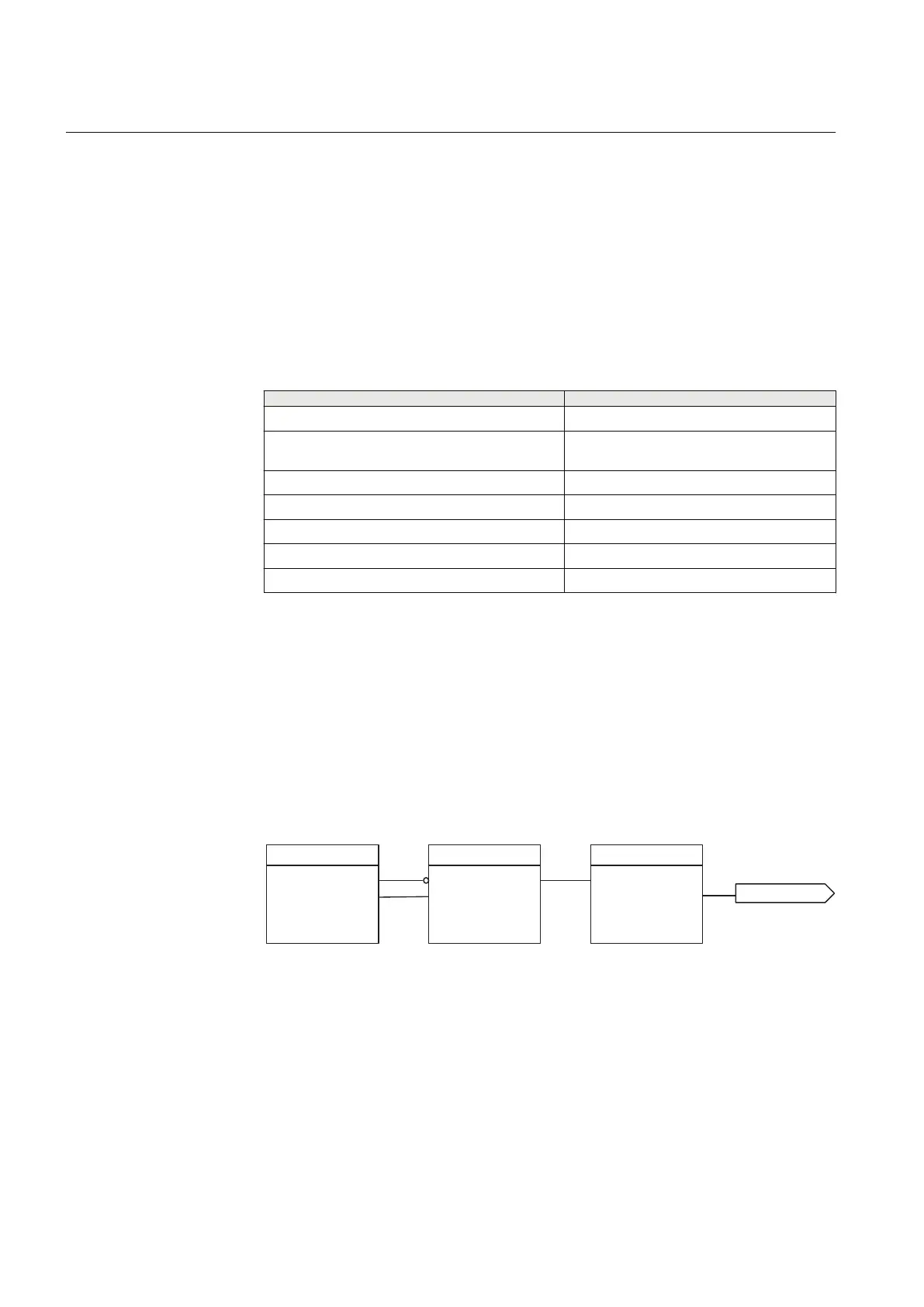The high and low limit settings provides limits for the high-high-, high, normal,
low and low-low ranges of the measured value. The actual range of the measured
value is shown on the range output of MVGAPC function block. When a Measured
value expander block (RANGE_XP) is connected to the range output, the logical
outputs of the RANGE_XP are changed accordingly.
13.2.3.2 Receiving data
GUID-CAE4B020-7131-49BF-BA29-3EEE0EFEA2B8 v1
The GOOSE data must be received at function blocks. There are different GOOSE
receiving function blocks depending on the type of the received data. Refer to the
Engineering manual for more information about how to configure GOOSE.
Function block type Data Type
GOOSEBINRCV 16 single point
GOOSEINTLKRCV 2 single points
16 double points
GOOSEDPRCV Double point
GOOSEINTRCV Integer
GOOSEMVRCV Analog value
GOOSESPRCV Single point
GOOSEXLNRCV Switch status
Application
GUID-808177B7-02CA-40DF-B41B-8B580E38478B v1
The GOOSE receive function blocks are used to receive subscribed data from the
GOOSE protocol. The validity of the data value is exposed as outputs of the
function block as well as the validity of the communication. It is recommended to
use these outputs to ensure that only valid data is handled on the subscriber IED.
An example could be to control the external reservation before operating on a bay.
In the figure below, the GOOSESPRCV is used to receive the status of the bay
reservation. The validity of the received data is used in additional logic to
guarantee that the value has good quality before operation on that bay.
GOOSESPRCV
Block Spout
DataValid
CommValid
Test
AND
AND
Input1 out
Input2 Noput
Input3
Input4
Input1 out
Input2 Noput
Input3
Input4
Ext_Res_OK_To_Operate
IEC16000082 V1 EN-US
Figure 112: GOOSESPRCV and AND function blocks - checking the validity of
the received data
Section 13 1MRK 511 423-UEN A
Station communication
238 Bay control REC650 2.2 IEC
Application manual

